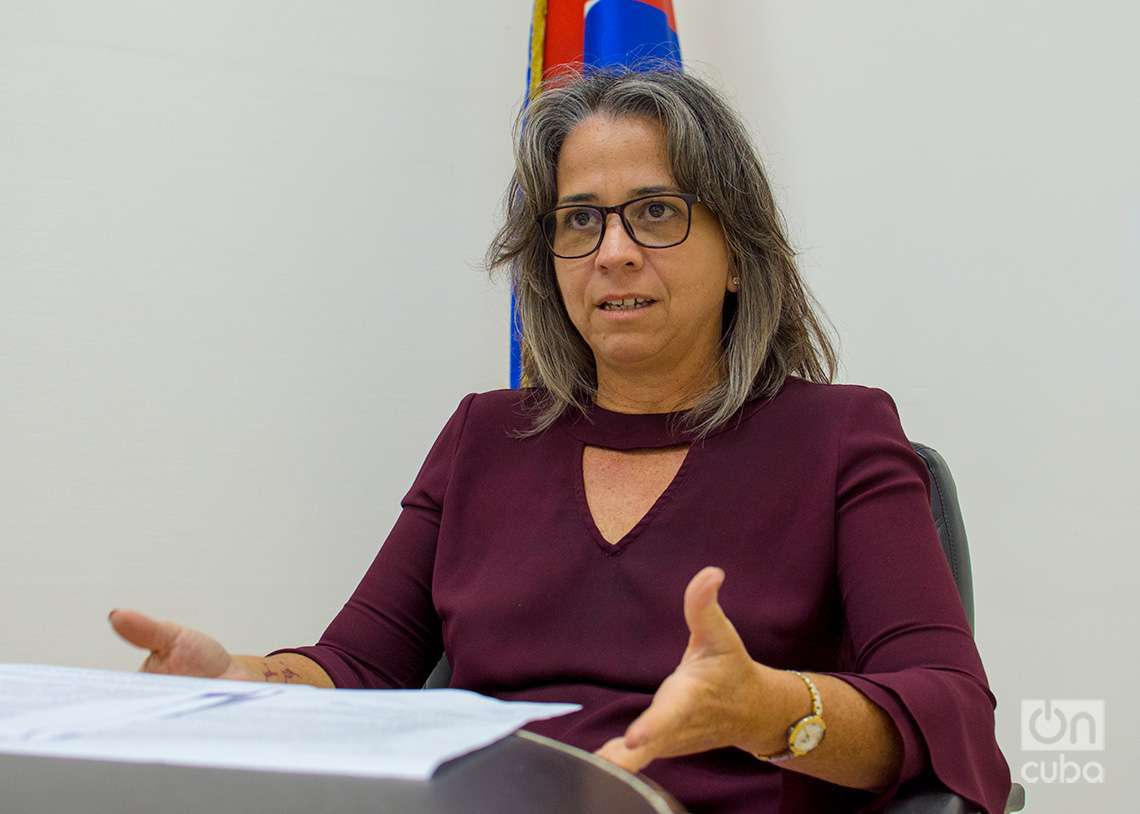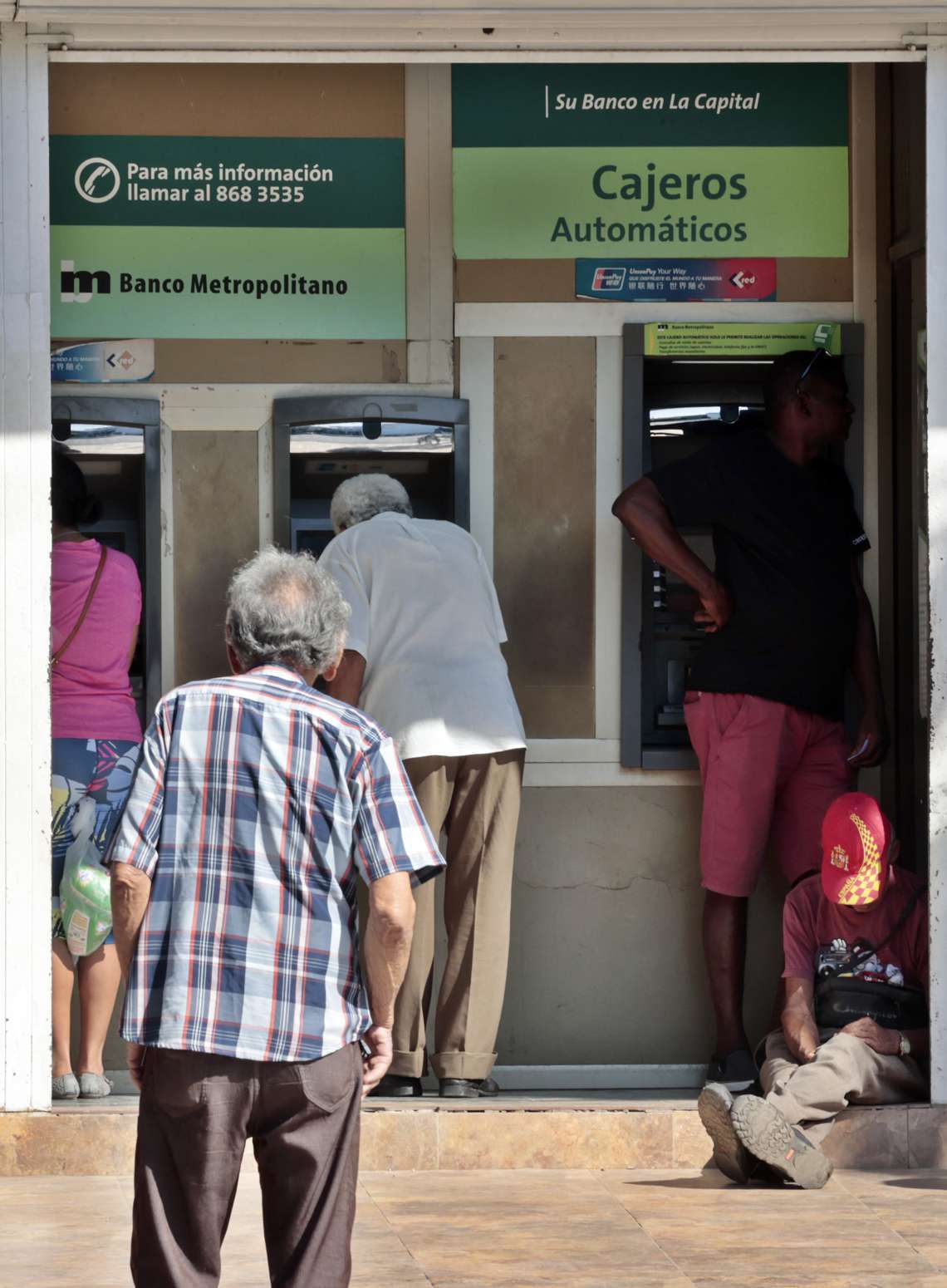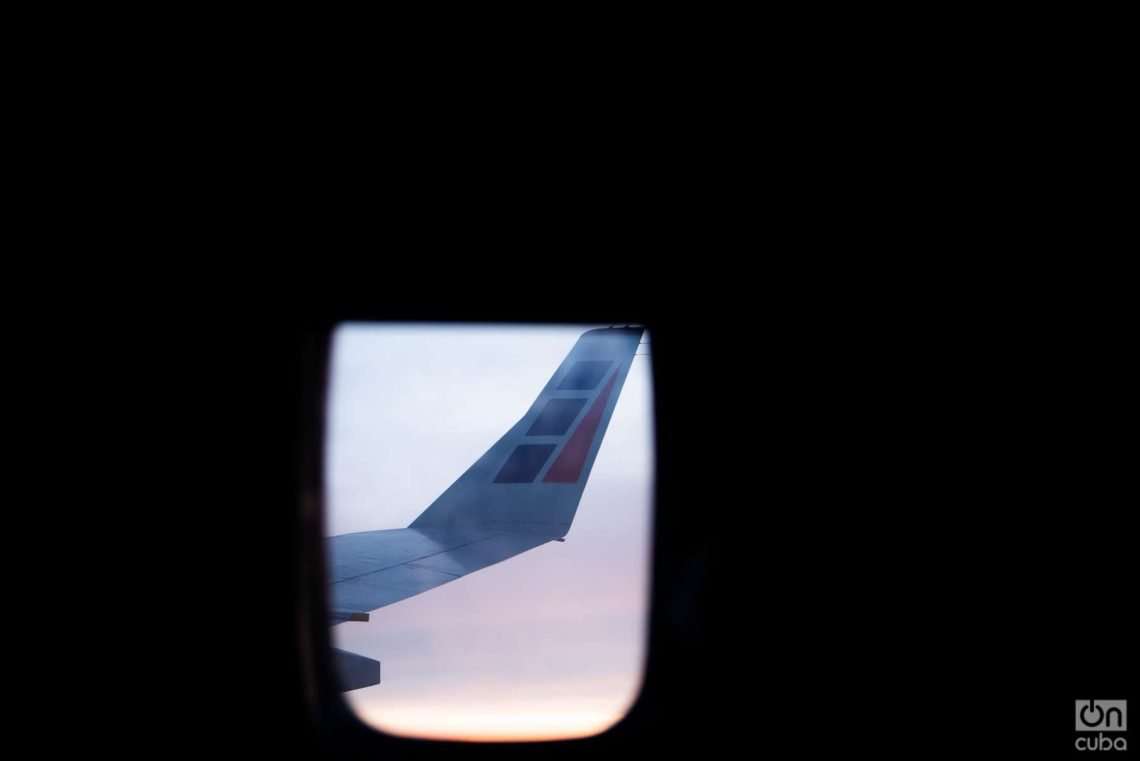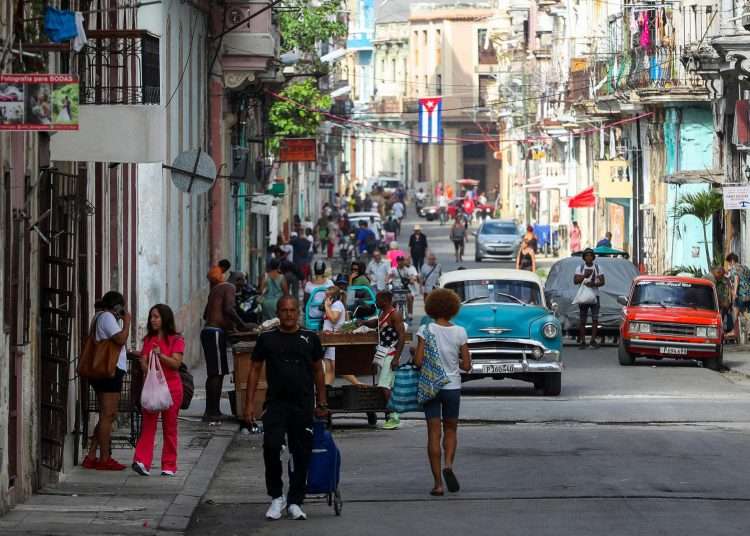The Cuban family is increasingly transnational. The island’s migratory dynamics, impacted by the socioeconomic and political context of recent decades, have fostered the expansion of the Cuban diaspora and, consequently, have modified family structures and environments.
Today, around 38% of families in Cuba have one or more of their most important members — up to the second degree of consanguinity — residing outside of Cuba.
Families of Cuban origin have also grown, which, inside or outside the island, are made up of people — couples and children — of other nationalities.
The changes in Cuban immigration policy from a decade ago have influenced this panorama by consenting to stay abroad for up to two years — or more, after the moratorium still in force due to the COVID-19 pandemic — without losing resident status in Cuba. This has allowed many Cubans to emigrate while maintaining ties to their country of origin, including family members.
The constant facilities historically granted to Cuban migrants in the United States largely define the profile of this transnational family within the largest community of Cuban émigrés in the world, which concentrates more than a million residents in that country.
The sustained development of global interconnection — even after the impasse forced by COVID-19 — and communication technologies facilitate relationships between family members.
The gradual economic, social and legal transformations — with the new Family Code as a representative example —, in the midst of a severe crisis that has strained the national reality, enable and stimulate family support networks that are being strengthened.
All of this forms a complex and diverse scenario, in which traditional concepts and practices are revitalized.
OnCuba spoke with Laura Pujol, the Cuban Foreign Ministry’s deputy director general of Consular Affairs and Attention to Cubans Resident Abroad, about the transnational family in the current context.
Based on her experience as a researcher and her governmental responsibility, she addresses various aspects of the subject and offers assessments in this regard.
What is understood by transnational family and how is it manifested in the Cuban scenario? Can one speak properly of a Cuban transnational family?
In reality, the etymology itself prevents the concept from being included in a national framework, and if we talk about the Cuban transnational family we are creating a great contradiction right there.
A transnational family is understood as a family group that is crossed by several nationalities. Therefore, we could not only speak of the Cuban transnational family, because that family has, by definition, more than one nationality coming together in itself. Instead, we can talk about how the Cuban family is impacted by the phenomenon of transnationality.
It is a subject on which several investigations have been carried out in the country, for example, by the Center for Demographic Studies. Based on some debates that took place around the Family Code, we became interested in this issue, especially in what refers to private international law, and because of the need to know, through our work, what is being handled at an international level on transnationality, a relatively new concept, and how it impacts our migratory dynamics and the Cuban family as such.
However, a priori we were perfectly aware of the weight of the phenomenon of transnationality in the Cuban family since one of the characteristics of Cuban emigration is its high level of communication with residual families in the national territory. In other words, Cuban emigrants have high connectivity with the family that remains in the country, recently boosted by the possibilities offered by video calls.
It is strange that congratulations are sung here in Havana or Santiago without someone making a video call to Uruguay, Argentina, Spain, the United States, and that one or more members are not somehow present in this family activity of the family who are not in the country at the time.
Cuba, current migration crisis: characteristics and testimonies (I)
Is this transnationality limited to family members born in Cuba or does it include people of other nationalities?
That too. The phenomenon covers not only Cubans who are on the island and their relatives abroad but also the family groups that Cubans from outside the country, which are complex and in which several nationalities can coexist.
It can be a Cuban who is in Spain whose spouse is Latin American, or another who resides in the United States with a European spouse; or children and grandchildren who have a nationality, while their parents or grandparents continue to live in Cuba. In other words, there are different levels of complexity and different scenarios in a transnational family.
In the national framework, one of the things that has the greatest impact is the presence of people of other nationalities who marry citizens of our country and come to reside in Cuba. And also, for example, young people who are doing university studies, or residencies in various medical specialties, and who in this period initially establish affective ties with Cuban men and women, who later end up in a family that also has characteristics of transnationality.
These are variants that must be considered when studying the phenomenon and addressing it in the laws and regulations of the country. In the Family Code, for example, the first thing was to recognize this reality and then the legislation was capable of covering the process in the friendliest way possible for citizens, regardless of their national category. And that it be as simple as possible and understandable as well, because perhaps, it covered all the complexities in depth, it would become a text that did not define guidelines.
In our opinion, the Code opens up the possibility of accepting different cultures, different ways of understanding and interpreting family reality based on a transnational perspective, especially on issues such as filiation, parenthood, types of unions, ways that are friendlier with other legislation and other realities that can be tempered. In addition, there is the possibility of interpreting what is the best legislation to use in case there is a conflict of laws in private international law due to the existence of different members with different nationalities within the family nucleus itself.

Based on your experience, what features characterize transnationality in the Cuban family?
Based on our studies, we have verified that there are four fundamental aspects that, in the case of our country, set the standard for transnationality in the family.
The first of these is the deterritorialization of family relationships. In other words, the family is no longer framed in a single location, the multiple forms of family nuclei are not tied to a specific territory. It happens not only with Cubans who emigrate, but also, for example, with Cuban aid workers abroad, who are no longer in the physical, geographical environment of their family, and may spend years outside the country and, nevertheless, they continue to be present in family life, in affective ties, in economic ties, in decision-making.
These issues mark the abandonment of a concept deeply rooted in our legislation and our cultural conception, which is the territorialization of the family. At this time, this concept has dissipated and, according to studies, this situation covers around 38% of the family nuclei in our country that have relocated members, important members, not distant relatives. We are talking about a nuclear family, stable unions, relatives such as fathers, mothers, children, siblings, grandparents, or grandchildren.
Another distinctive feature is distance conjugality. The legal requirement of cohabitation exists and is a requirement in most of the periodizations of marital relationships or de facto relationships.
However, we are facing a reality in which this coexistence is in many cases virtual. In other words, there is no daily coexistence under the same roof, but even so, marital relationships that are carried out at a distance and that are real remain established for years. They are relationships that exist and cannot be ignored when considering legal, administrative, and consular processes. They require recognition.
Another important topic is semi-face-to-face parenting or paternity. This is the case of many parents who leave Cuba temporarily as a result of the new legislation and immigration modifications that have been approved. We are talking about people who leave and enter Cuba, with long periods of stay abroad for work, for economic-commercial relations outside the country, or for other reasons, and who return without being considered to have emigrated at any time. These people, who are legally resident in the national territory, are actually exercising semi-face-to-face parenting because they do not live or share face-to-face with their children on a daily basis.
These are concepts that were included in the new Family Code, which contains the issue of guardians, the possibility that people who stay in Cuba in charge of these minors, beyond caring for and providing for them, can legally represent them to all effects; before it was not possible. The father or mother spent several years abroad and the minor legally had no one to take care of his affairs.
And the last of the four aspects related to the transnational family in the Cuban context is that it generates conditions of social vulnerability. It is a situation that affects some minors, but especially older adults who are left unprotected as a result of the phenomenon.
In our conception of the family and its dynamics, the issue of grandparents living with their children and grandchildren as part of the family reality has been predominant. And now there are many older adults who live alone, who are in conditions of social vulnerability based on the departure from the country, permanently or temporarily, of their descendants and the greater or lesser possibility of these relatives to take care of their affairs.
I am not thinking only of economic issues, but above all affective issues and also of daily practices; or in the face of specific situations, such as illnesses, hospital admissions and other problems that may arise.

What other elements of the Cuban social and migratory context influence these dynamics?
In this phenomenon for Cuba, the circularity of migration must be considered. Now there is the possibility of not only leaving or returning but also a spiral pattern: exit, enter, exit, enter, exit, enter.
There is another concept, which is not to leave permanently, but to leave and return, maintaining the conditions of resident in the national territory and, at the same time, residing in another country, under other legislation. And that, logically, also has an impact on family practices and dynamics.
Even for those who permanently reside outside of Cuba, possibilities have also been opened, starting with the 2018 immigration modification, which broadens the criteria for repatriation, because this does not imply that the person must remain anchored in Cuba.
This repatriation implies that the person enters Cuba, settles here, and immediately begins to travel and begins to enjoy the benefits established by the new Cuban legislation regarding long periods of stay abroad without losing the residence requirements in the national territory.
What impact does the transnational aspect have on the functionality of the Cuban family, and on society in general?
I would need a PhD to answer that question, due to the complexity of the subject. From our advanced work, I consider that it is a broad and transcendental influence and that it covers all social, economic, legal, and political aspects.
Regarding the possible impact on the functioning of the family nucleus, based not only on the studies but also on the knowledge accumulated in twenty-five years in consular activity, interacting with Cubans residing abroad, I would say that what works well, does so regardless of whether or not there is face-to-face in Cuba, whether the family all resides in the country or is transnational. And if it is dysfunctional, then it works badly wherever its members are.
I know of families that for years have had within themselves different types of migration and all possible effects and, even so, remain a strong, recognizable, functional family nuclei. And when there have been problems, regardless of the route, they have overcome them as a whole.
It does not mean that there are not moments in which this functionality has been put to the test, of distancing, of rupture even for political reasons that have affected the family unit. But the moment passes, things have been put together and taken their course because we Cubans are very familiar and we attach great importance to these affective ties.
In one way or another, we have been learning to put ourselves together, to relate even when there are differences, be it for political, personal, or other reasons, because the criterion of the importance of the family unit prevails.

What challenges does the transnationality of the family entail for Cuban consular activity?
In relation to this issue, we have great dissatisfaction, and it is that we, despite spending years trying to develop a consular service according to the needs of our citizens, are unable to do so in the country with the most Cuban emigrants, the United States.
We have a wide consular network, with 140 consular offices in 120 countries, where we try to carry out work to accompany and monitor these issues. But it is ironic that many of those offices are in places where not that many Cubans actually reside.
On the other hand, in the country where the most Cuban émigrés reside, we only have one office, which can barely provide face-to-face services, which has limited travel within the U.S. territory for its consular service, and which also has limited personnel. In other words, despite the great effort that my colleagues in Washington make, under these conditions, it is not possible for us to provide the best service.
Noting this down, I will say that important steps have been taken in our consular activity in recent years, especially from lessons learned from the pandemic, from situations that have arisen based on new realities that we have experienced since the 2013 migratory modifications, which mark a before and after in relation to the possibility of Cubans to be able to reside outside the national territory and maintain their ties with Cuba; the possibility of traveling and returning if they so wish, and of fostering family ties in person when they are in the country.
This dynamic was affected during the pandemic due to the lack of mobility, although it is being retaken again. The levels we had before have not yet been reached, and the current migratory context cannot be ignored either, a direct consequence of a premeditated attack from the United States, and in which many people are leaving the country.
As a trend, the circularity of migration must once again manifest itself, which must contribute, in turn, to a greater bond of Cubans residing abroad with the country: to their greater presence in the different aspects of life and Cuban society, and all of this must also have an impact on the family sphere.
Our job is to create the conditions for this because it is what the country needs and what the Cuban family needs. That is our commitment.
*To be continued…










